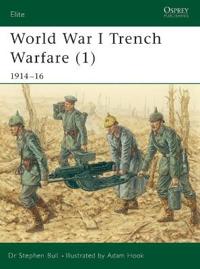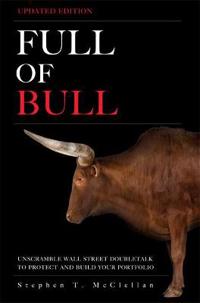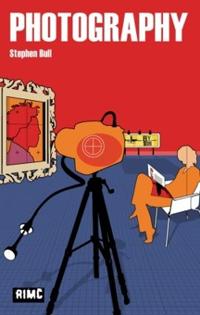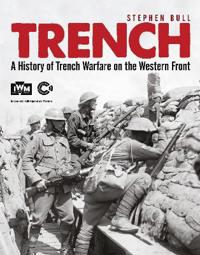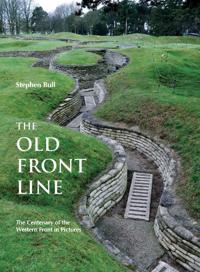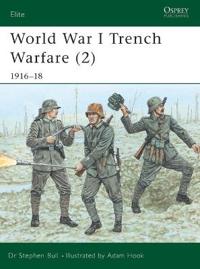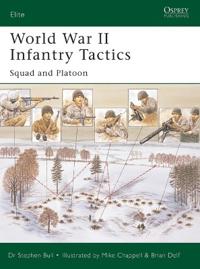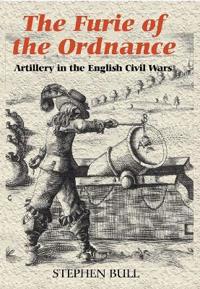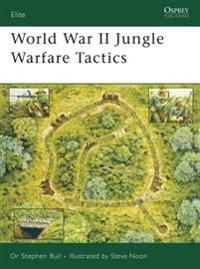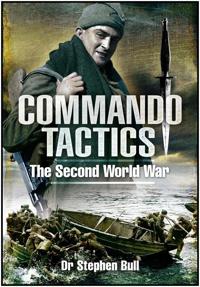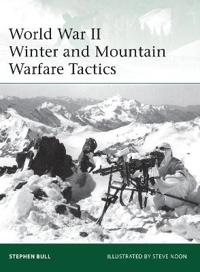World War I Trench Warfare (I) 1914-16 (Pocket)
avStephen Bull, Adam (ILT) Hook, Stephen Bull
ISBN: 9781841761978 - UTGIVEN: 2002-02The years from 1914 to 1918 saw a whole series of complex and very rapid changes in infantry tactics, which fundamentally altered the way wars had been fought for 150 years. This two-part study describes and illustrates the development of infantry equipment and weapons; of support weapons; of field [...]
World War II Street-Fighting Tactics (Pocket)
avStephen Bull, Peter Dennis, Stephen Bull
ISBN: 9781846032912 - UTGIVEN: 200809Osprey's study of street-fighting tactics during World War II (1939-1945). In a continuation of the tactics mini-series, this new book describes and analyzes the physical tactics of the close-quarter fighting that took place in the ruined cities on both the Western and Eastern Fronts of World War II[...]
Full of Bull (Häftad)
avStephen T. McClellan
ISBN: 9780137023127 - UTGIVEN: 200906The Truth About Wall Street Stock Research--Now 100% Updated for Today's Markets! They mislead. They confuse. You can't afford to listen to one word stock analysts say--especially not right now. Wall Street won't tell you how to protect your capital or steer you toward gains. The Street is good at s[...]
Photography (Storpocket)
avStephen Bull
ISBN: 9780415428941 - UTGIVEN: 200912Especially aimed at media students, this text presents photography not from a historical or artistic viewpoint, but instead gives an overview of the place of photography in contemporary society and its importance as a media form. The text is split into short chapters to make it easily accessible for[...]
Trench (Pocket)
avStephen Bull
ISBN: 9781472801326 - UTGIVEN: 2014-05This is an authoritative history of the trenches, drawing on the renowned resources and photographic collection of the Imperial War Museums, providing unique insight into trench warfare on the Western Front. "Sometimes I clamber up beside the sentries and look out. There's little to see, rough groun[...]
The Old Front Line (Inbunden)
avStephen Bull
ISBN: 9781612002309 - UTGIVEN: 2014-08Now that the last veterans are gone, the First World War is now a completely historical subject - governed by archaeology and genealogy, battlefield tourism and military history. The anguish and privations are a bit further away, but there is still huge interest in the awful conditions and carnage e[...]
World War I Trench Warfare (Häftad)
avStephen Bull
ISBN: 9781841761985 - UTGIVEN: 200206The years from 1914 to 1918 saw a whole series of complex and very rapid changes in infantry tactics, which fundamentally altered the way wars had been fought for 150 years. This two-part study describes and illustrates the development: of infantry equipment and weapons; of support weapons; of field[...]
World War II Infantry Tactics (Pocket)
avStephen Bull
ISBN: 9781841766621 - UTGIVEN: 200406Despite all technological advances, final mastery of any battlefield depends upon the tight-knit group of footsoldiers trained to manoeuvre, shoot and dig in. This first of a two-part study examines the methods by which the Western infantry of World War II - the German, British and US armies - actua[...]
World War II Infantry Tactics (Häftad)
avStephen Bull
ISBN: 9781841766638 - UTGIVEN: 200502Drawing on contemporary training documents and veterans' descriptions, this book examines the specific tactics used by the men who inspired 'Band of Brothers' and 'Saving Private Ryan'. The tactics used by US, British and German troops are compared and discussed, and the evolution of new weapons and[...]
Furie of the Ordnance (Inbunden)
avStephen Bull
ISBN: 9781843834038 - UTGIVEN: 2008-09The English Civil War has frequently been depicted as a struggle between Cavaliers and Roundheads in which technology played little part. The first-hand sources now tell us that this romantic picture is deeply flawed - revealing a reality of gunpowder, artillery, and a grinding struggle of siege and[...]
World War II Jungle Warfare Tactics (Häftad)
avStephen Bull
ISBN: 9781846030697 - UTGIVEN: 200702Suffocating heat, tropical rain and hostile jungle terrain were but a few of the treacherous obstacles that confronted the Allies when they fought against the Imperial Japanese Army in the Southeast Asian rainforest. Aided by the knowledge of the terrain, the Japanese were consistently successful in[...]
Second World War Infantry Tactics (Inbunden)
avStephen Bull
ISBN: 9781848840706 - UTGIVEN: 201202The 'poor bloody infantry' do the dirty front-line work of war. It bears the brunt of the fighting and often suffers disproportionately in combat in comparison with the other arms of service. Yet the history of infantry tactics is too rarely studied and often misunderstood.Stephen Bull, in this in-d[...]
Commando Tactics (Inbunden)
avStephen Bull
ISBN: 9781848840744 - UTGIVEN: 201103British commandos are among the most celebrated soldiers of the Second World War. Their daring, ingenuity and bravery have given rise to an almost legendary reputation that makes it difficult to appreciate fully their role and their true value as fighting men. Stephen Bull, in this in-depth study of[...]
World War II Winter and Mountain Warfare Tactics (Häftad)
avStephen Bull
ISBN: 9781849087124 - UTGIVEN: 201304The twentieth century saw an unprecedented emphasis on fighting in all terrains, seasons and weather conditions. Such conditions made even basic survival difficult as subzero temperatures caused weapons to jam, engines to seize up and soldiers to suffer frostbite, snow blindness and hypothermia. The[...]

